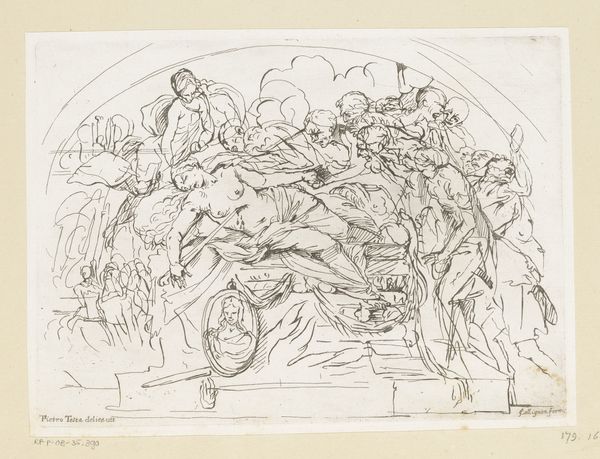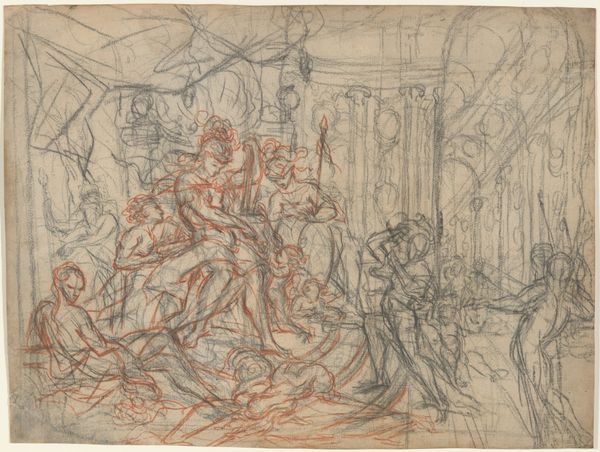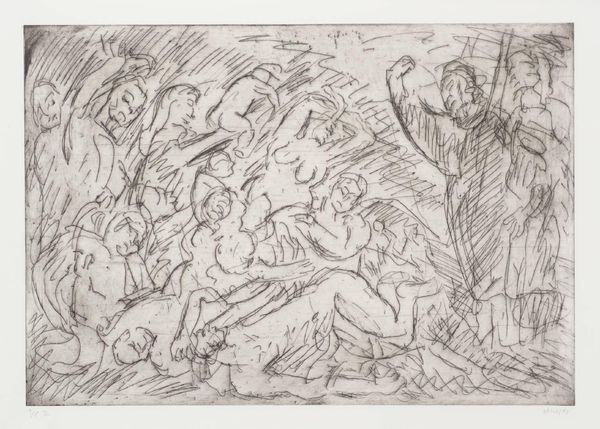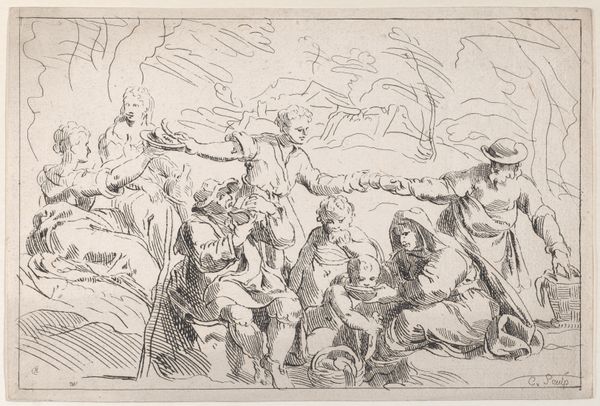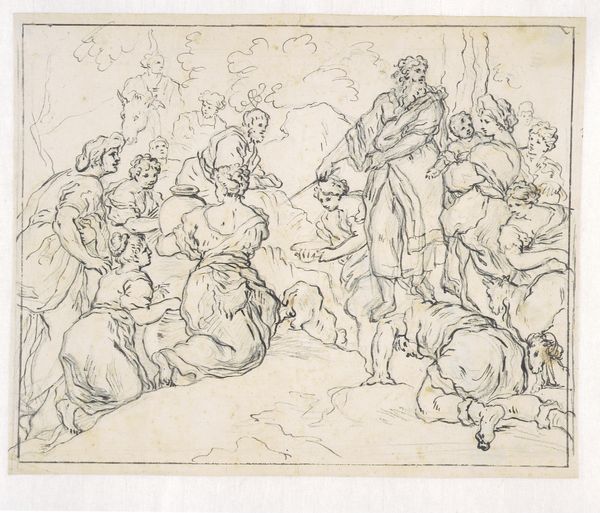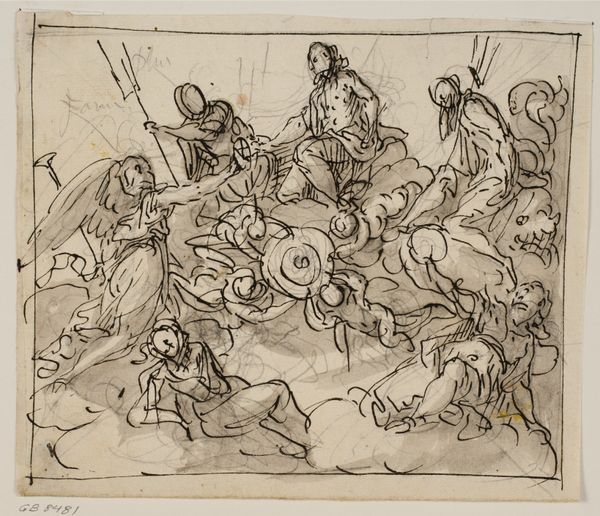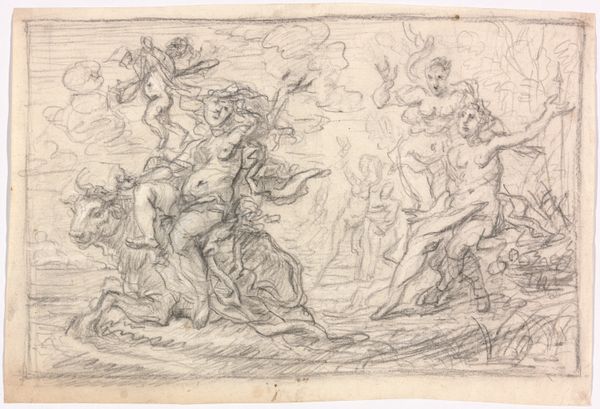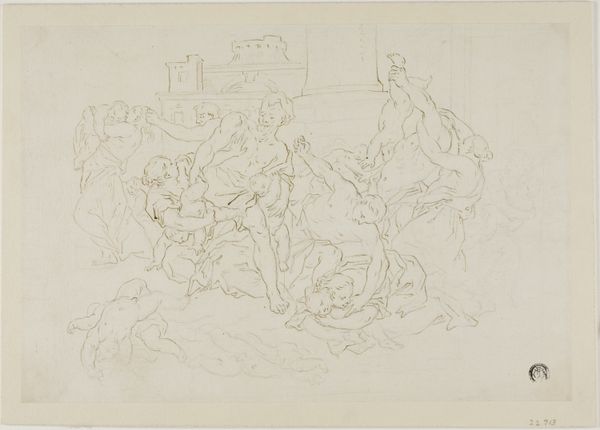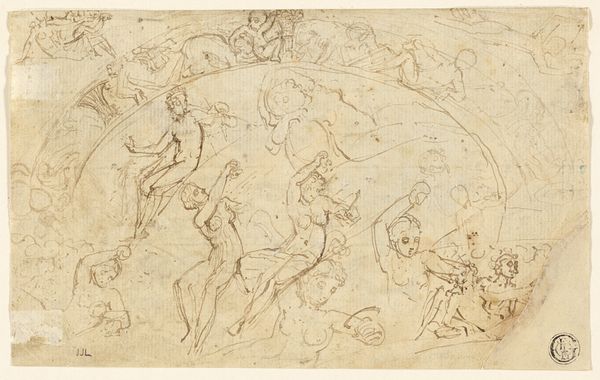
drawing, print, engraving
#
drawing
#
ink drawing
#
baroque
# print
#
pen sketch
#
figuration
#
line
#
history-painting
#
nude
#
engraving
Dimensions: sheet: 7 7/8 x 10 13/16 in. (20 x 27.5 cm)
Copyright: Public Domain
Editor: This is "The Suicide of Dido," an engraving by Pietro Testa from the 17th century. The scene feels incredibly dramatic and tragic, like a stage production frozen in time. What’s your interpretation of this emotionally charged composition? Curator: What I see first is the brutal intersection of gender, power, and colonial desire that underpins this scene. Dido's suicide, rooted in abandonment by Aeneas, a symbol of Roman patriarchal ambition, becomes a powerful statement of resistance against the erasure of female agency and indigenous sovereignty. How do you read the expressions of the figures surrounding her? Editor: They seem to be expressing a range of emotions – shock, grief, despair... it's as if they're witnessing a cataclysmic event. I notice the loose, almost frantic linework. Curator: Absolutely, the linework mirrors the chaos and disruption caused by the colonial narrative. But consider also the idealization of the female form, even in death. Do you think it celebrates or critiques the objectification of women within a patriarchal framework? Think about how female suffering is often aestheticized for a male gaze. Editor: That’s a crucial point. It's disturbing how beauty and violence are intertwined, even in her final moment. I hadn't considered the Roman context of this story. Curator: Testa offers a space for questioning dominant narratives, challenging us to critically examine the relationships between power, representation, and resistance. Understanding this as resistance underscores the painting's radical potential, a cry for self-determination against the tides of colonial power. Editor: So, beyond the immediate tragedy, it speaks to a larger struggle for identity and self-determination against colonial oppression? It feels way more complex than just a dramatic death scene now. Curator: Exactly. Seeing art as part of broader systems allows to question our perspectives. Editor: I’ll never look at a historical artwork in the same way again!
Comments
No comments
Be the first to comment and join the conversation on the ultimate creative platform.
